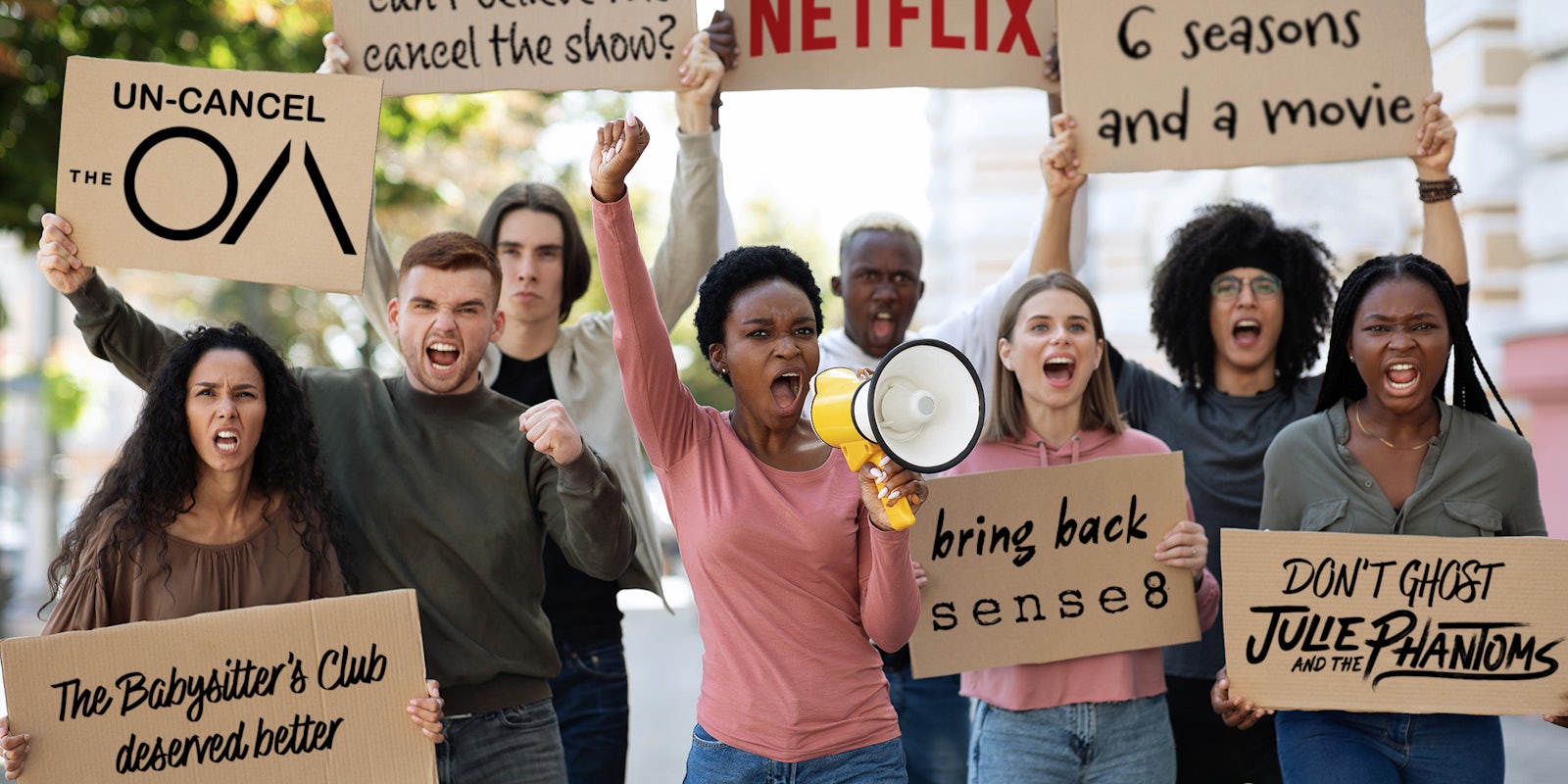When it comes to saving shows from cancellation, connoisseurs of TV history or fandom stalwarts are familiar with the greatest hits.
They know about the letter-writing campaign that got NBC to change its mind about canceling Star Trek, which paved the way for a genre-defining franchise that’s lasted more than five decades. In recent years, we’ve seen Brooklyn Nine-Nine switch networks while shows like Tuca and Bertie and One Day At a Time made the rare jump from streaming to cable. (Both shows have since been canceled a second time.) Or when a group of famous fans helped advocate for The Expanse’s salvation before Amazon swooped in, where it ran for three more seasons. Or in the brief window of time when Yahoo made TV, the time it gave Community a sixth season—which, more recently, Peacock also greenlit the Community movie that it once jokingly prophesied.
Netflix is home to several of them: More seasons of Arrested Development, Fuller House, and Gilmore Girls. For that, it’s garnered a reputation for saving shows from the brink of cancellation. But it’s only “saved” a handful of shows over the years, like Lucifer from Fox, You from A&E, Designated Survivor from ABC, and Manifest from NBC. Its most recent resurrection came in October with Peacock’s critical darling Girls5eva, a show that Netflix picked up for a third season before Peacock officially announced its cancellation.
TV is inundated with prequels, sequels, revivals, and reboots, demonstrating that no matter how long since its original heyday, what is dead may never die. There’s even a meta-comedy about rebooting a beloved ’90s sitcom, fittingly titled Reboot, on TV right now. It streams on Hulu. But most shows don’t get that second chance, and so they languish, or in many cases, build a thriving community spurned on by that TV death. Still, many of their fans press onward in hopes that one day they’ll be picked up again.
But, as what’s become apparent in recent months, cancellation isn’t always the final blow for a series, nor the cruelest. A streamer might choose to remove the show entirely so that nobody can watch it, a move that’s been described as both a way to cut costs from licensing fees and to reportedly not have to pay the people who worked on it residuals anymore. (In decades past, some broadcasters didn’t see the importance of preserving some older episodes of television, which is why there are still 97 missing episodes of Doctor Who decades later, to name one example.)
It leads to shows like Gordita Chronicles only getting a six-month shelf life from its premiere in June 2022 to its axing from HBO Max entirely in December 2022. It even affects a show like Westworld, which ran for four seasons over six years, won nine Emmys, and will soon no longer be available to stream on HBO Max. For something like The Minx, it means a new season already filmed might not see the light of day.
Many of the shows being removed from streaming services have the same characteristics as those that spawn such fervent TV fandom afterlives. And for fans of those shows, there’s something just as horrifying about that erasure.
“I’m haunted by the prospect that The OA could disappear from Netflix,” Alexander Lloyd, an OA fan who started watching the series in 2016, told the Daily Dot. “The idea that I could never rewatch a show that acts as a home for me is terrifying.”
The ‘First Kill’ cancellation set off a fan campaign
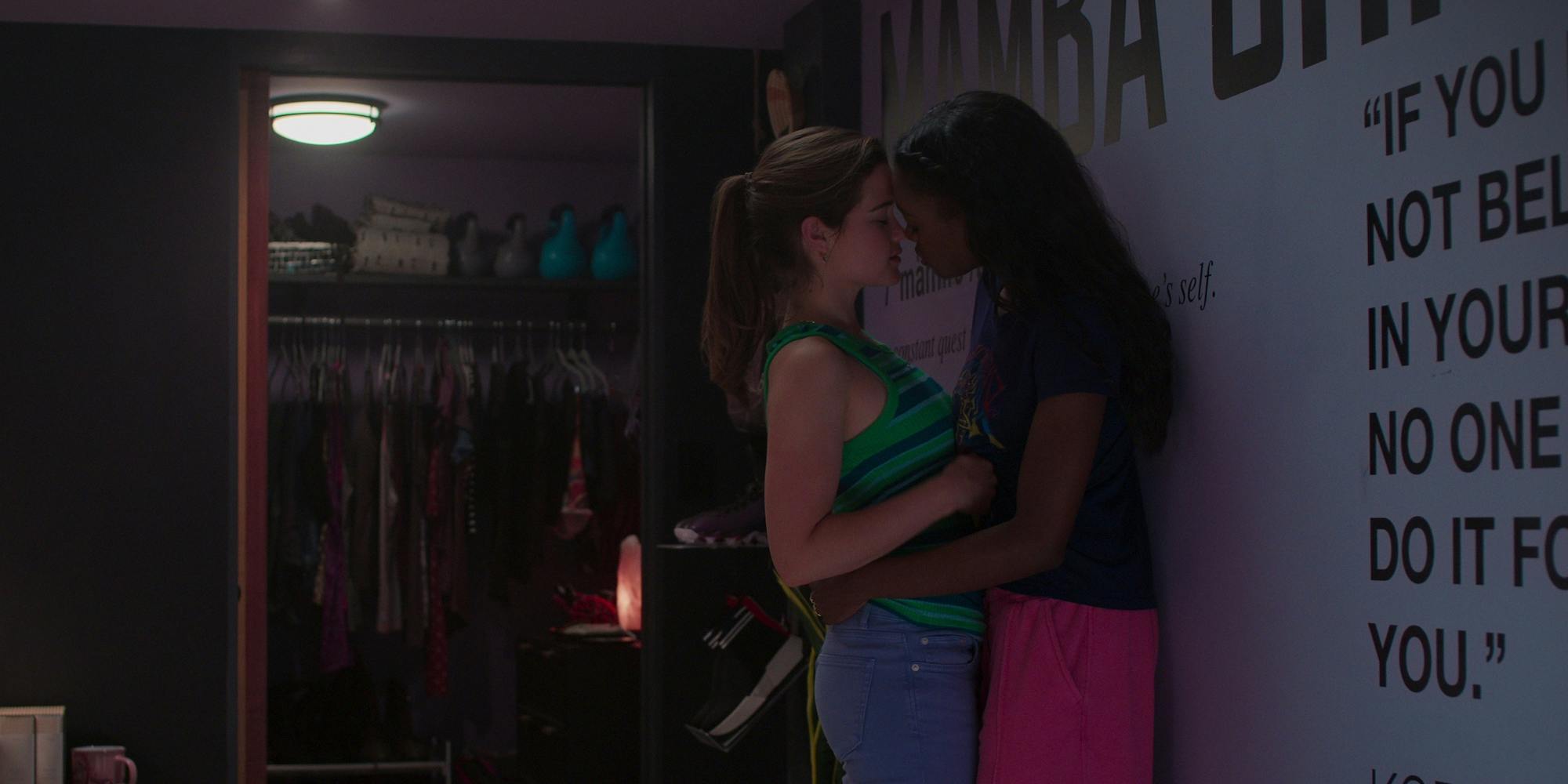
In early August, in what’s become an increasingly common occurrence across television, Netflix canceled the teen vampire series First Kill after just one season.
The series, sold to subscribers as a forbidden lesbian teen romance between a vampire and a vampire hunter and based on a short story by V.E. Schwab (who also wrote for the series), received mixed reviews upon the release of its first season on June 12. But it was popular on Netflix, at least according to Netflix’s metrics, which measure viewership in the number of hours (often in the millions) a project is viewed. In the show’s first four weeks, it charted in the top 10 for 82 countries and spent the first three weeks after its release in Netflix’s Global Top 10 for English-language TV shows, with 97.66 million hours viewed during that period. (It charted for a fourth week in Hungary, Jamaica, and Kenya.)
It wasn’t enough. In its article about the cancellation, Deadline, which reported that First Kill hit over 100 million hours viewed in its first 28 days, was told by sources that the series “still did not meet thresholds for viewing and completion of episodes.”
Amid the usual reactions to the premature cancellation of a TV show that garnered a passionate fanbase—rallying cries for another network to pick up the show, a trending hashtag, and a Change.org petition to save the show that received nearly 13,000 signatures to date—there was also anger and frustration.
First Kill showrunner Felicia D. Henderson blamed the marketing and the fact that what marketing was out there only focused on the lesbian teen romance aspect of the show and didn’t include mention of its other themes and storylines. Some fans also called out Netflix because it gave Heartstopper (a queer teen coming-of-age romance between two white boys in modern-day England) a two-season renewal over First Kill (an interracial lesbian romance). Heartstopper, which received near-universal praise and had 53.4 million hours viewed in its first 28 days (far fewer than First Kill), may have had other factors that led to its renewal, such as cost or a long tail.
On Aug. 20, a billboard urging people to #SaveFirstKill ran in Times Square. Featuring artwork by Monica Monroe, it thanked the people who brought the series to life and passersby to a website that’s actively trying to organize efforts; you can fill out a form letting organizers know what you’re willing to do to help. Tanya, a First Kill fan who led the fundraising effort and previously participated in efforts to save the Netflix series Everything Sucks! (canceled after one season) and the Syfy series Wynonna Earp (which ran for four seasons, but the status of the final season was in limbo for a while), said that the momentum to get the billboard going happened pretty quickly “after the distress signal was sent that we needed to take action.”
“Did [the cancellation] surprise me? Yes and no,” Tanya told the Daily Dot. “No, because as a queer fan, it’s come to be expected, especially recently. Wynonna Earp, Batwoman, Legends of Tomorrow, The Wilds, etc., and now First Kill. We’re always given excuses for why shows are canceled, particularly in ratings, but the worst and surprising part with regards to First Kill is it did do extremely well with ratings and every milestone, the goalpost was moved to some other extraordinary measure it needed to meet. Even though it was set up to fail by being released without promotion around the same time as the juggernaut Stranger Things, First Kill still was right there competing with it, trending globally.”
…
“What we’ve been seeing lately, and ‘lately’ meaning within the last two years, is, there are a lot of petitions also around representation,” Alaina Curry, who was a media & partnerships lead at Change.org, told the Daily Dot. “So we’ve seen that as a big driver of support.”
Many of the TV-centric petitions Change.org sees involve shows centered around marginalized communities: They’re shows starring female characters, queer characters, BIPOC characters, or oftentimes a combination.
First Kill wasn’t the first significant show whose unceremonious cancellation this year sparked outrage: Shows like Made For Love, Raised By Wolves, and Gordita Chronicles on HBO Max; The Baby-Sitters Club on Netflix; much of the CW’s TV block; and The Wilds on Amazon Prime Video were among the shows that preceded it. Nor would it be the last. Since Aug. 4, Paper Girls on Amazon Prime Video, Maggie on Hulu, Resident Evil on Netflix, and Rutherford Falls and Queer As Folk on Peacock have all faced the TV chopping block. And those are only a tiny fraction of the hundreds of TV shows that premiered new seasons this year; according to FX Chairman John Landgraf, we saw 357 shows launch in the first half of 2022. Many fans of those shows have gone—or will go—onto the long and winding online route of urging other networks to save them.
“We don’t report on a ton of specific, on its own fan campaigns because there are so many these days, and they kind of become commonplace,” IGN’s Eric Goldman explained in the 2018 documentary United We Fan, which delves into the decades-long history of fan-led TV campaigns. Even a few years ago, the sheer number of shows that fought for a second chance was so numerous it became hard to keep track.
The breadth of dead shows vying for our attention has only grown since United We Fan‘s release. As a result, it’s not uncommon to learn of a show’s existence only upon its cancellation. Or to discover that show already had three seasons that aired without many people noticing before it ended.
What happens when a campaign doesn’t work?
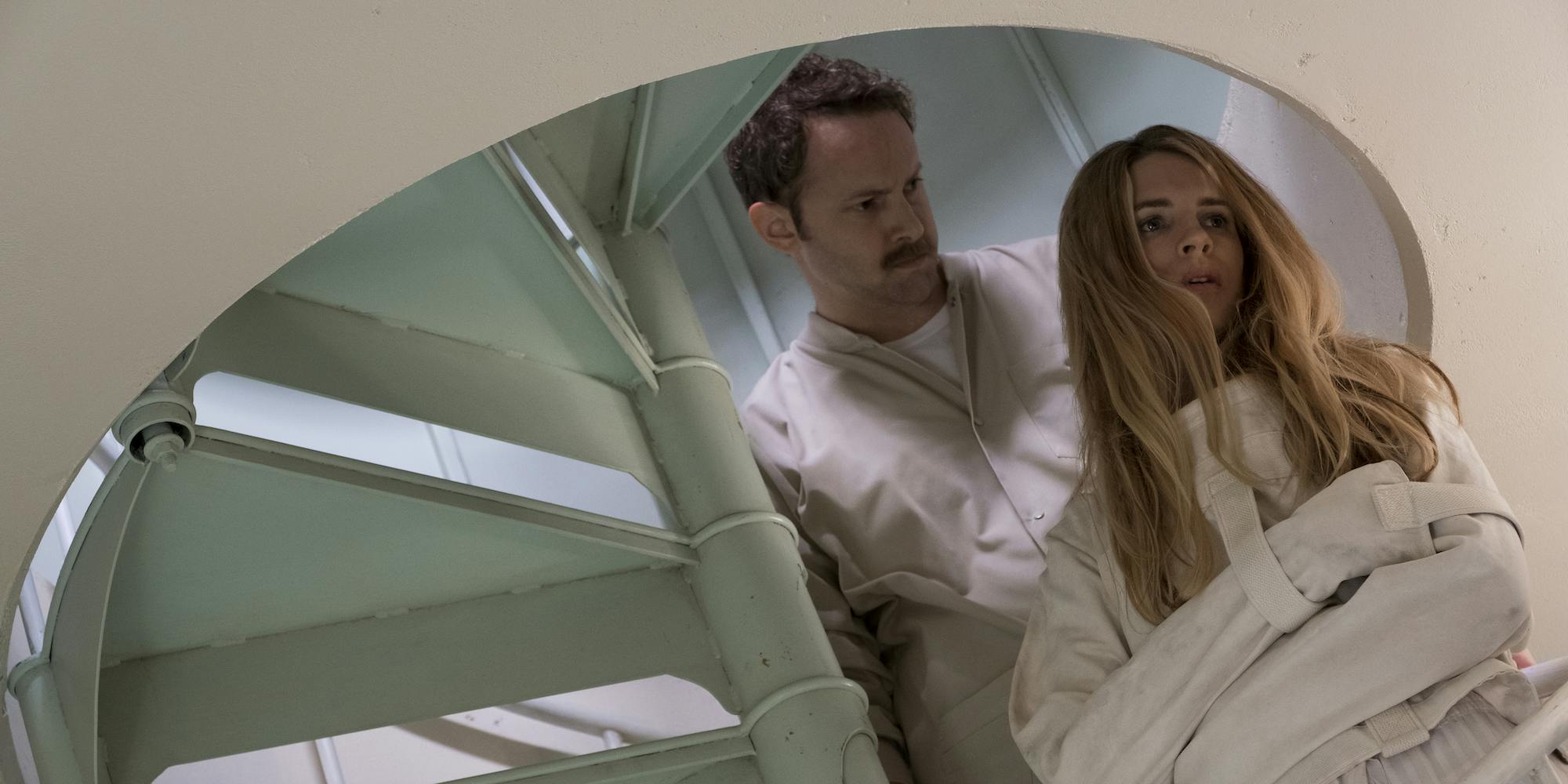
The OA, Netflix’s high-concept, character-driven sci-fi/mystery series from Brit Marling and Zal Batmanglij, was one such show whose save campaign broke out. The show garnered a cult following during its two-season run as fans latched onto the unique storytelling it had to offer. It had critical acclaim and even had the elements of a mystery box show, which might prompt fans to rewatch the series. But in August 2019, Netflix canceled the show, which prompted fans to launch a virtual flashmob, post videos of them performing movements from the show, and even protest the move outside of Netflix headquarters. In addition, a billboard with the #SaveTheOA hashtag ran in Times Square.
“I’d begun to really see myself in the show, and so when the news came, I felt like a part of myself had died,” Lloyd, the OA fan, explained. “I remember sitting at my desk and just staring blankly into space, frozen. I felt blindsided since season 2 ended on a massive cliffhanger. I thought there was no way they’d [Netflix] leave a show hanging like that, but they did.”
While Lloyd was sad about the Netflix series Sense8 being canceled (it would later get a wrap-up movie), #SaveTheOA was the first fan campaign he participated in. Much of the work toward the movement in those first crucial months, when the campaign was most active, was to get people to watch the series and grow the fanbase as a way to show Netflix that there was an audience for The OA. He said, “We liked to say that we were doing their marketing for them.”
Marling and Batmanglij have since had their limited series Retreat ordered at FX. But, as time wore on and the likelihood of Netflix or a rival picking the show up waned, Lloyd said discussions turned to the show. At a certain point, people began having disagreements in the campaign, and he wanted to bring the focus back to everyone’s love of the show.
“I wanted to develop a way to mend those fractures, thinking that if we had a dedicated space to applaud and celebrate the art inspired by The OA, maybe we’d recognize our shared love for the show,” Lloyd said. “So with that, I created Gallery of OA on Instagram. A space where I asked OA fan artists of all kinds if they’d like to be featured in the Instagram gallery. In the two years [that] Gallery of OA has been active, we’ve shared literary, audio, and visual works about and inspired by The OA. The goal was to highlight the amazing artists in our community, as well as give the community something to connect us all.”
But The OA isn’t forgotten among its cast and crew. In August 2021, Marling posted The OA fanart to Instagram, telling fans that “we promise that one way or another we will find a way to keep telling that story.” And Jason Isaacs, who starred in the series, recently told The List, “We were all heartbroken when it was canceled, but we’re aware that the door’s not shut.”
…
At this point, #SaveHannibal and the community that formed around it have been around more than twice as long as the show it rallied to save. Hannibal, Bryan Fuller’s spin on pop culture’s most famous cannibal that ran for three seasons on NBC, was the kind of show that’d fit right into the IP-hivemind that’s present through much of TV nowadays. But instead of being a pale imitation of a famous film or an iconic villain, it turned cannibalism and murder into delectable high art. And it anchored the show in a queer love story between FBI profiler Will Graham (Hugh Dancy) and Hannibal Lecter (Mads Mikkelsen), the cannibalistic serial killer he’s meant to stop who’s hiding right under his nose.
It took Rotem Rusak, a news editor at Nerdist and one of the people responsible for the #SaveHannibal campaign, most of season 1 for Hannibal to click. But once it finally did, she dove right into writing fanfiction and meta, and she made friends in the fandom by attending live panels. When Hannibal was canceled in 2015, she recalled sitting in front of her computer, watching the chaos unfold on Twitter and Tumblr, and crying; she described it as “a blow, a trauma almost, without exaggeration.” As she did that, a few thoughts popped into her head: The fans need to get the show back, they need to work together, and she could help make that happen.
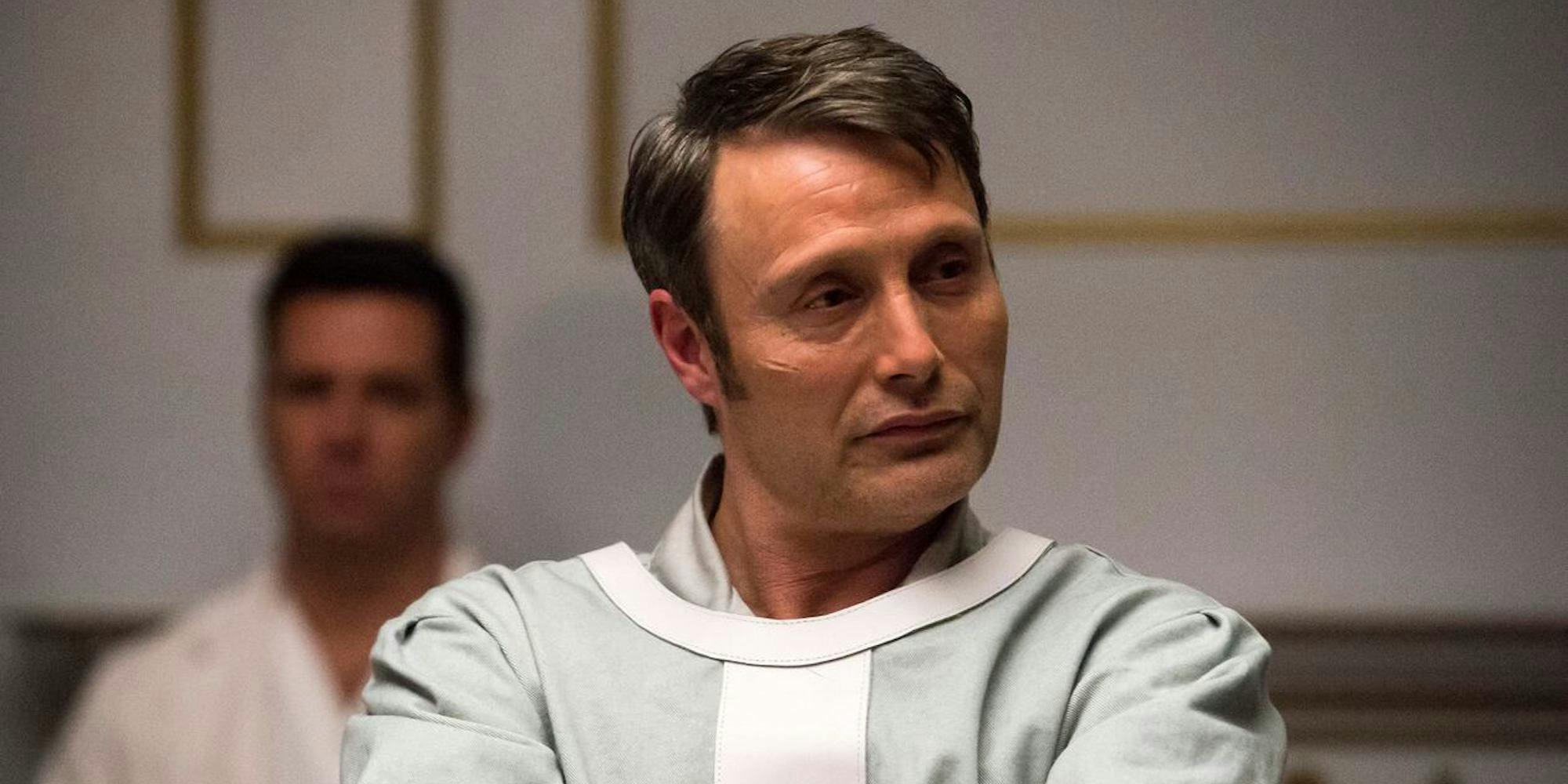
“At its heart, Hannibal is a show about being seen for who you are, no matter how weird or hard to understand you may be,” Rusak explained. “And by the same token, Hannibal is a show that sees its fans. We feel seen by it in content, we feel seen by its creators, and we see one another in our community. Hannibal ultimately attracts a very queer, very Othered audience. It’s an audience that doesn’t see itself in most mainstream shows and more widely, isn’t sure of its place in the reality of our lives.”
Fuller got to shop Hannibal around to other networks, but Netflix and Amazon both passed on it. Meanwhile, much of the coordination that Rusak and other fans did in those early days would form the foundation of a movement that’s lasted seven years and counting. They took cues from Hannibal’s official Twitter account and needed a centralized hub (which they would have with @fannibalmovemnt. They tried just about everything you can imagine: Letter-writing campaigns, online petitions, sending Netflix forks, printing physical fliers, organizing rewatches, and days where they tried to get the show trending. Rusak launched a #SaveHannibal newsletter that, at one point, reached 60-100 pages and became a resource even for people who left social media.
The key, Rusak explained, was to make the information as accessible as possible for anyone to want to join in (and make them feel welcome), and the movement always made time to celebrate the show, the fandom, the fandom works, and the people who made that show possible. When it came to getting media attention around Hannibal, it would show that Hannibal still had a fandom behind it: She coordinated a virtual Hannibal reunion for Nerdist, which landed right around the time that Hannibal became available to stream on Netflix.
And sometimes, the press can’t be planned: Last year, Rep. Andy Kim (D-N.J.) chose a high school student’s cubist Hannibal fanart submitted for a contest to be displayed in the U.S. Capitol without knowing that it was inspired by Hannibal, something that the internet picked up on right away.
Rusak feels that the #SaveHannibal movement did everything possible to save it, and while a network has yet to pick it up, she’s still proud of the work they’ve done and the community that’s formed around it. It also helped that the movement always had the cast and crew on their side, especially Fuller.
“Many creators don’t understand their fandoms; they don’t quite get their passions and quirks,” Rusak said. “But Bryan does. He is the first to say that he’s a fanfic writer, too, that Hannibal is fanfiction, and nothing is ever too ‘weird’ or too ‘abnormal’ for Bryan. Things that other creators feel uncomfortable with, Bryan embraces.”
Curry noted that having creators on board with save campaigns can create an impact even if networks don’t rescue a show, citing the Netflix educational children’s show Emily’s Wonder Lab, which included support from host Emily Calandrelli, as one example.
‘People feel a sense of ownership for their favorite shows’
In Barry’s third season, Sally (Sarah Goldberg) gets to make an autobiographical TV show for a streaming platform called BanShe (a stand-in for streamers, but most notably Netflix). The show, Joplin, has its release pushed up because a rival network has a show with a similar premise. Joplin gets rave reviews (98% on Rotten Tomatoes, a much higher number than the other show) and is on BanShe’s home page when the series launches. But Joplin is swiftly buried by the algorithm, and just 12 hours later, the show officially gets the ax. As the exec who is no longer sure why she greenlit the show in the first place put it, “the algorithm felt it wasn’t hitting the right taste clusters.”
For many of the shows canceled well before they get a chance to thrive, it’s a new shorthand for an uncertain and often frustrating TV landscape that appears to be led by an algorithm instead of people; some have joked that Barry is a documentary.
The lack of transparency about viewership data from streamers—many creators don’t even know how their streaming show is doing—or what factors go into a show’s renewal fuels that frustration, especially when many of the shows that get canceled are the ones about underrepresented communities. For example, Netflix’s statement about canceling One Day At a Time in 2019 drew plenty of criticism for citing the importance of representation in a thread that blamed the cancellation on the fact that “simply not enough people watched to justify another season.”
“I think people feel a sense of ownership for their favorite shows, and what is confusing for them is, they don’t understand how things are renewed or not,” Amanda Mustafic, Change.org’s communications director, told the Daily Dot. “With mainstream channels, you get a little bit of understanding with Nielsen ratings. They can look at the ratings themselves and say, ‘OK, so no one is really watching this show except for me, I guess.’ And it’s a hard feeling, but they can see that. But with streamers, there is not that transparency about who’s watching what on Netflix and how many viewers unless they choose to share it. And they’re not choosing to share that data.”
Over the summer, Warner Bros. Discovery shocked fans and creatives alike by canceling the HBO Max original movie Batgirl, a decision driven purely by the ability to take a tax write-down on the film. Since then, dozens of TV shows and movies, many of which were HBO Max originals and not frequently watched, have been removed from the platform to reportedly cut down on residuals paid out to the people who made them. In a since-deleted tweet from August, Dickinson creator Alena Smith said she had to beg an executive at Apple to give her a single physical copy of her show.
“The Batgirl/ HBO Max situation is why I spent my last day on set of Dickinson calling an exec at apple and *begging* for a physical recording of my show…they actually gave me one, I have the ONLY copy….” she tweeted. “People said I was crazy but dude, that’s ten years of my life 
When Warner Bros. Discovery removes an original from HBO Max, it, in a sense, effectively erases those shows and movies’ existence. Netflix removed several original series from its library before, many of which were due to expired licensing agreements, but it wasn’t until this past September that it announced that Hemlock Grove, one of the first originals Netflix made, would be removed.
So far, a streamer pulling original shows and movies from its library is a move mostly enacted on HBO Max—and to a much lesser degree, Netflix. Hannibal had a physical home release, and copies of the show are readily available, so for Rusak, her show being removed online isn’t as pressing of a question; many of the show’s fans have both physical copies and stream the series. But for fans whose shows are streaming-only, it looms that much larger.
“It would be nice if Netflix sold physical copies of their original properties, but I’m not holding my breath,” Lloyd said. “At the end of the day, these streaming platforms are a business. They bring us some great works, like The OA, but profit is their goal, and because of that, art suffers. The same can be said for music labels or movie studios. Good art is often ignored in service of profit. Sometimes these businesses are able to strike a balance, as Netflix had for quite a while, but at the end of the day, they value money over art.”
Tanya is looking at the bigger picture, linking the potential removal of queer-centric TV shows with the wave of anti-LGBTQ+ censorship taking place in libraries and schools across the country.
“We are already seeing what could absolutely lead to permanent purging by books and the word gay being banned in some areas of the U.S.,” she said. “And then you look at the response to shows like First Kill & A League of Their Own, it’s clear there’s a huge untapped market for representation of underserved communities. The question is, do the network & streaming executives have the courage to be progressive and tell those stories or cower to stakeholders and the vocal right-wing minority?”
So what does a save campaign look like now?
Getting another season from the original network or another is ideal, but venting and letting networks know how they feel is just as much a goal; sometimes, it’s the only goal. Two such petitions involved the call to remake Game of Thrones season 8 before the series ended (most people didn’t actually expect that outcome to happen) or fans petitioning for Stranger Things to bring back Eddie Munson from the dead. The petition around saving Raised By Wolves tapped into that energy as well. The downside, particularly for something like the Game of Thrones season 8 petition (and a later House of the Dragon petition that called for the firing of one of its writers), is that it can come off looking like fandom entitlement at its worst.
“What’s now happening is that people who are loving shows that are on Netflix are now targeting places like Netflix,” Curry said. “It’s becoming this kind of, they’re known for canceling shows very, very fast without giving it any type of chance. Or publicity, which is another complaint that we see a lot, is not giving the show fair publicity. I think an example of that would definitely be Raising Dion, where it was such a fan favorite, but Netflix didn’t really push it and then said that it didn’t do well. That’s definitely a conversation we’re starting to see it shift into.”
Mustafic noted that she started seeing petitions for shows that were canceled several years ago, which she and Curry both attributed to the pandemic; that led to the appearance of petitions for shows canceled several years ago. But even if many of the petitions aren’t outright “successes,” it remains an outlet to get their voice out.
“I think there are very few ways for people to really interact with organizations that don’t feel very transparent, and to connect with other fans is only going to continue to be a big thing for these fanbases, who will feel less alone for their love of these shows, find new ways to connect,” she said.
And these campaigns are forging connections, some that could last longer than the shows themselves.
“I would never dream to call cancellation a good thing, but I think cancellation did evolve the Hannibal fandom,” Rusak said. “Had we simply gotten a season four, we may not have all come together as we ultimately did. For myself and for many people, the fandom has been life-changing. It’s brought friends, skills, opportunities, hope, and so much love. A lot of that is down to the way we all came together to fight for the show but ultimately came out with one another.”
The First Kill fandom is early in its save campaign, and along with the billboard, it’s coordinating efforts to get the show trending on Twitter, especially during Netflix’s recent Tudum event in which it previewed dozens of original shows and movies. And a recent tweet from the #SaveFirstKill campaign offering words of encouragement amid their efforts.
“[W]hat has kept us fighting and staying here, is remembering what and who we are doing this for,” the message read. “We aren’t just connected to FK because it’s a beautiful and amazing show with diversity and minority representation spread throughout, but we’re connected because of what we were able to find after watching FK…There’s no limit to the amount of love we have for one another, so let’s use that energy to keep pushing us forward in a positive way.”
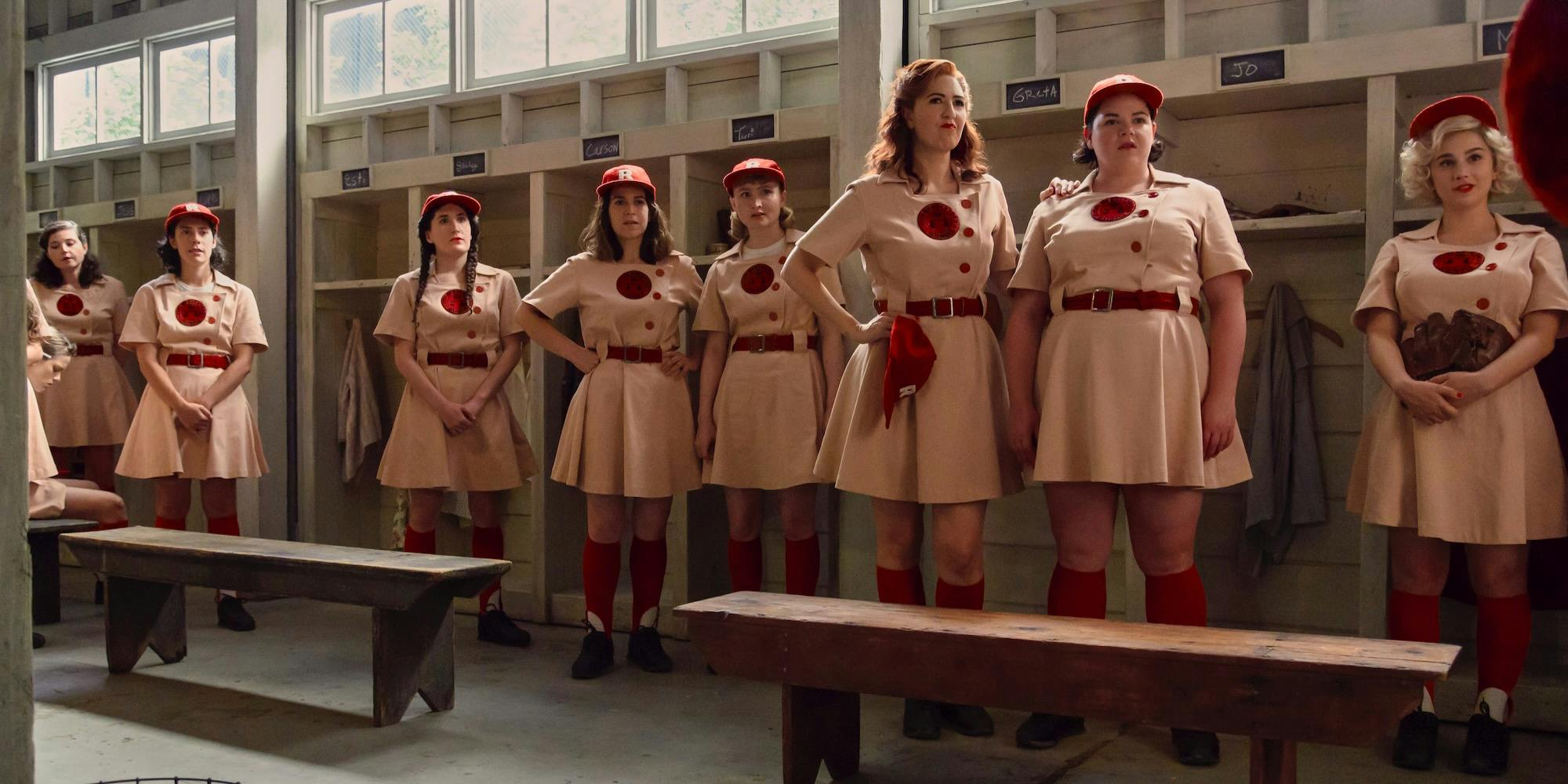
Even now, two TV shows with buzz and notable online fanbases—Netflix’s The Sandman and Amazon Prime Video’s A League of Their Own, which both dropped as full-season binges in August—that seemed like no-brainers just a few years ago can now be uncertainties. The Sandman’s season 2 renewal arrived in early November, but for several months, co-creator Neil Gaiman was vocal about viewers getting their eyes on the show (and even had to debunk a fake cancellation tweet before the announcement rolled in).
But ALOTO is still in limbo. Since the show came out in mid-August, co-creator Will Graham has posted about how vital it is to watch through the entire season to help boost numbers regarding viewership and engagement. He’s also been open about his limited perspective on what their respective streamers are looking for. As of this month, Graham is still retweeting fanart and fans’ appreciation for the show, which includes the hashtag #renewALOTO. If ALOTO is canceled, it doesn’t take much to see that fandom—who’s touted the show’s complex LGBTQ+ representation among its attributes—pivoting into the next big campaign to save a TV show.

